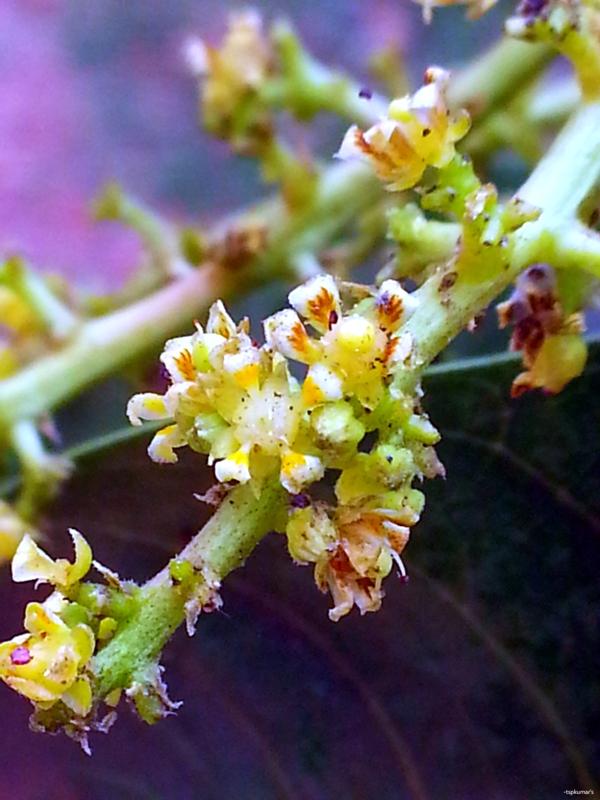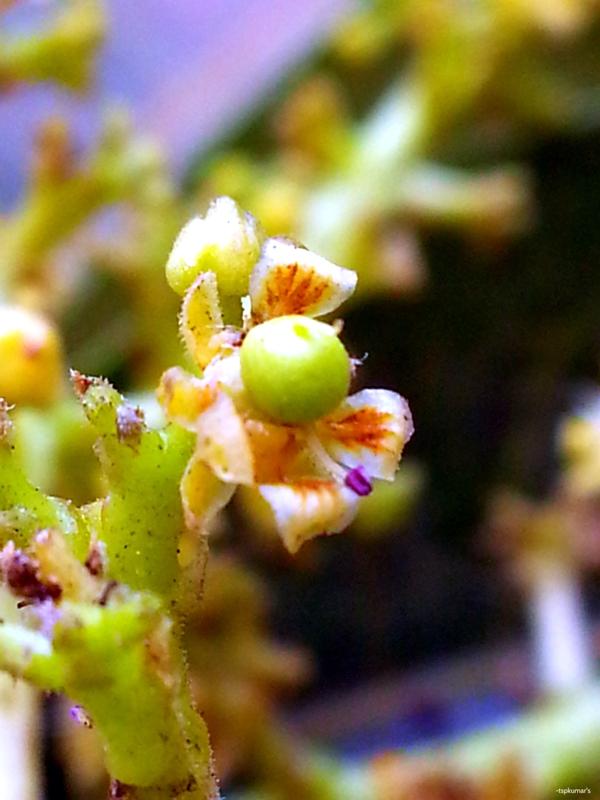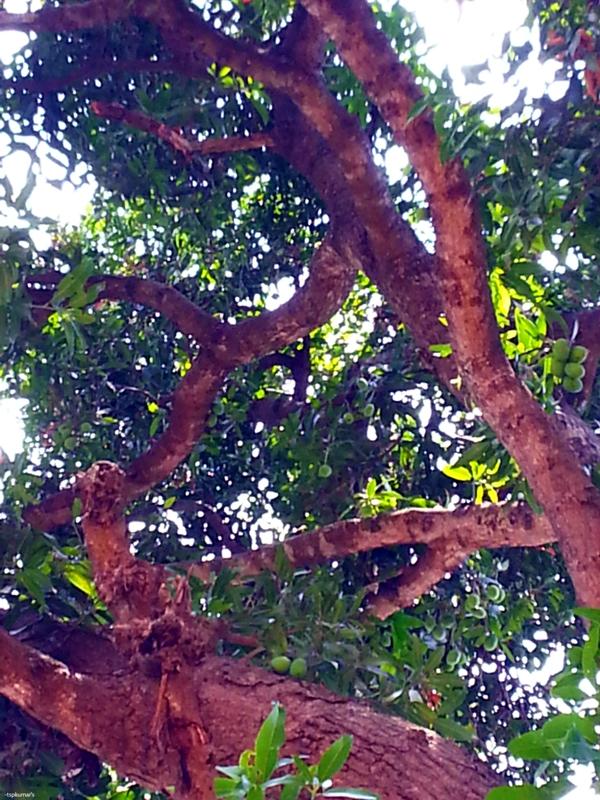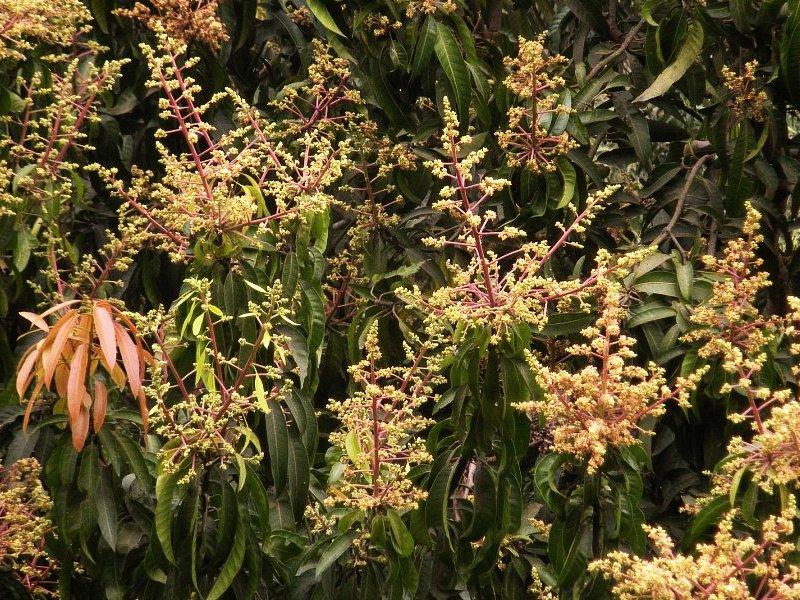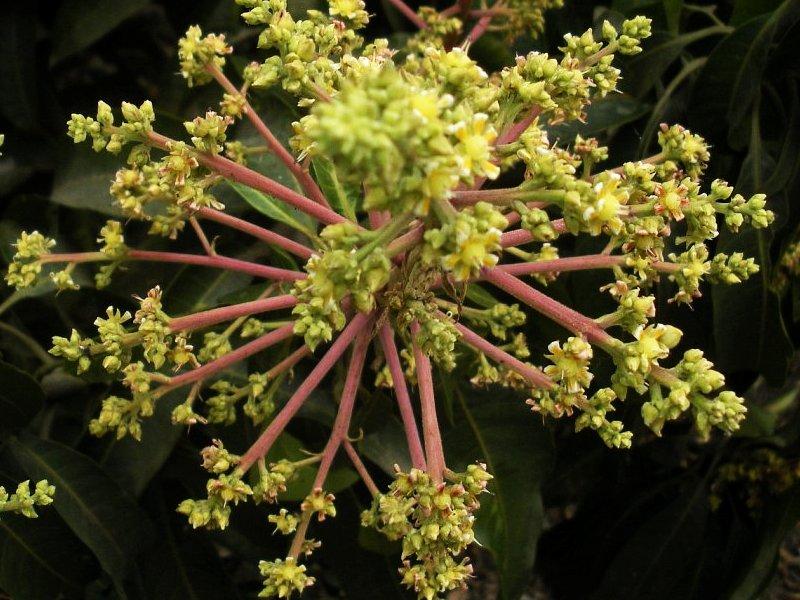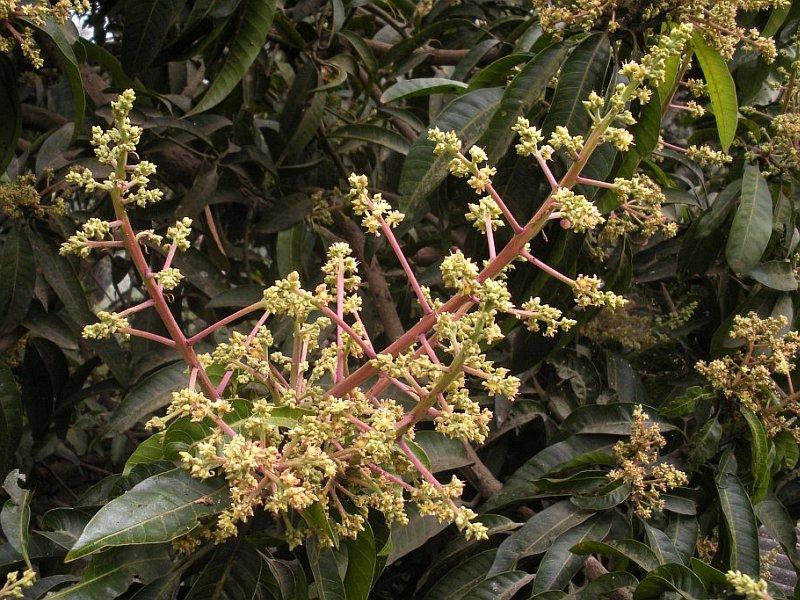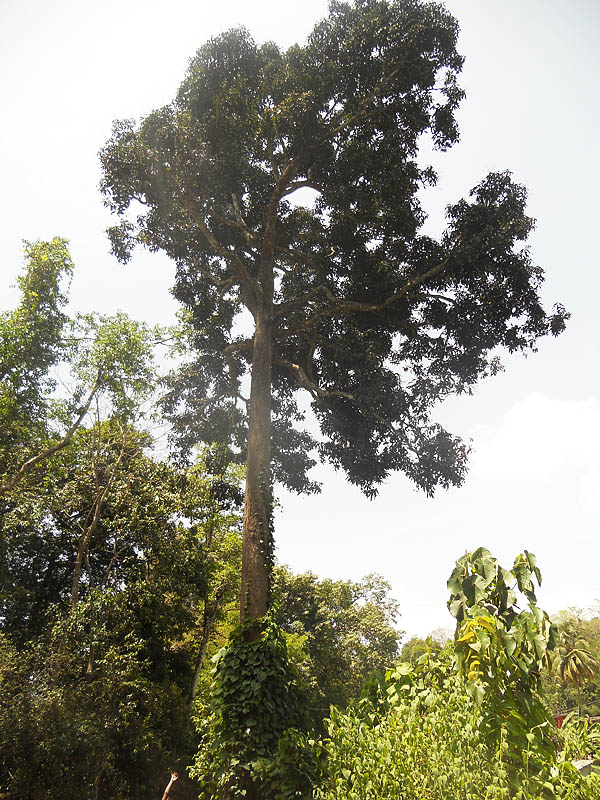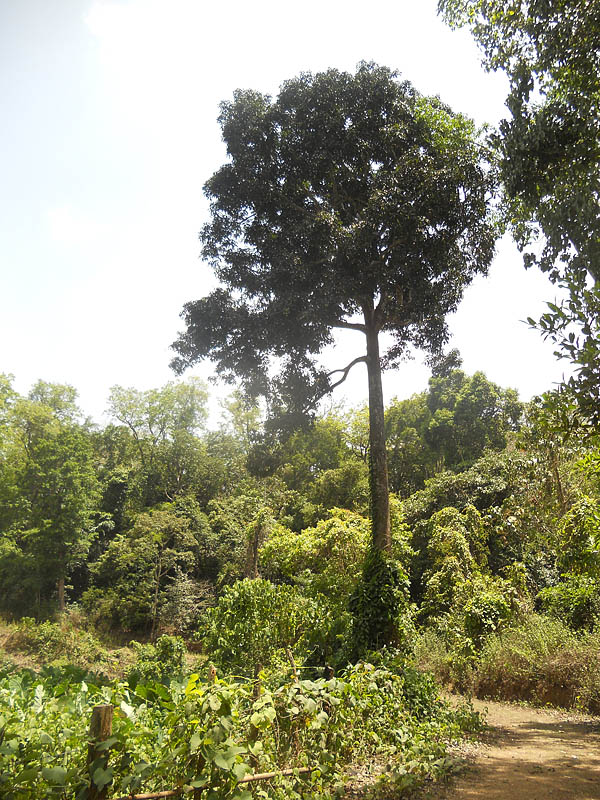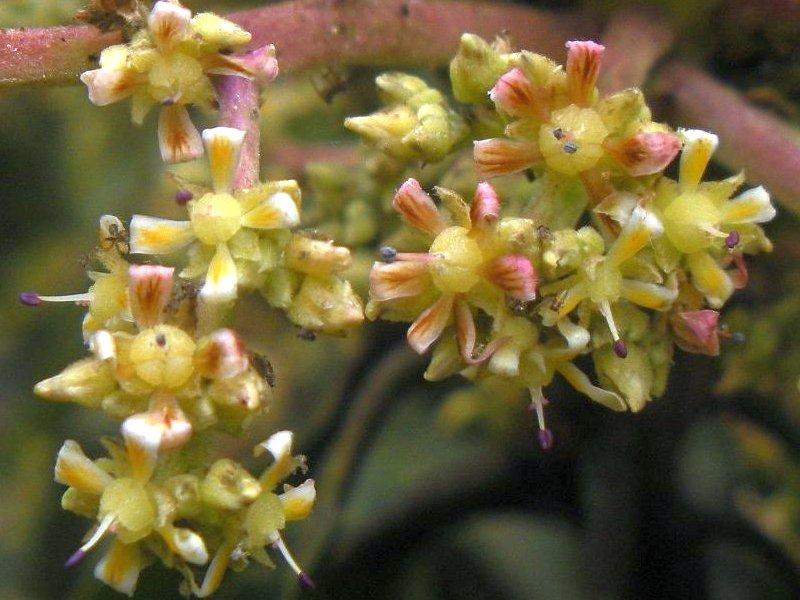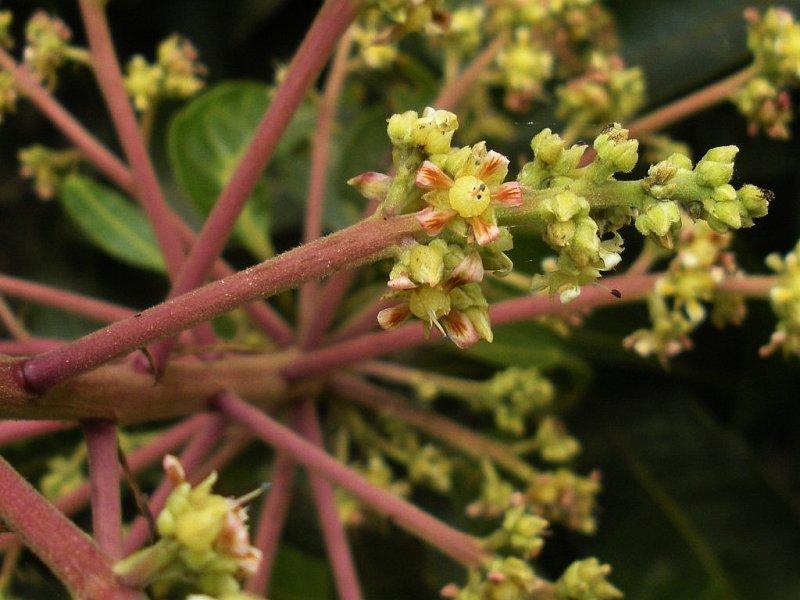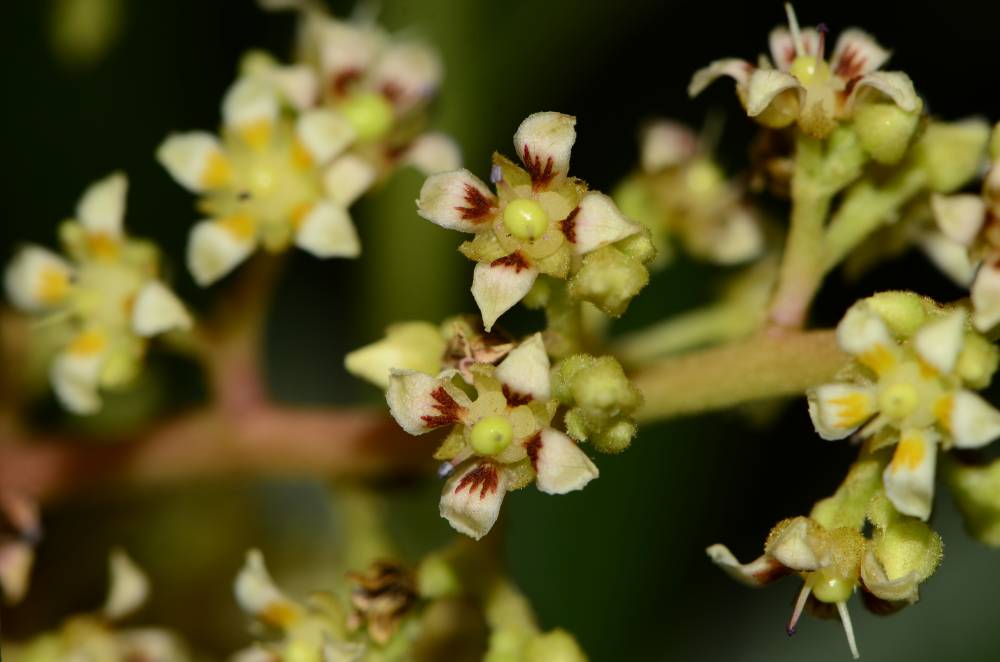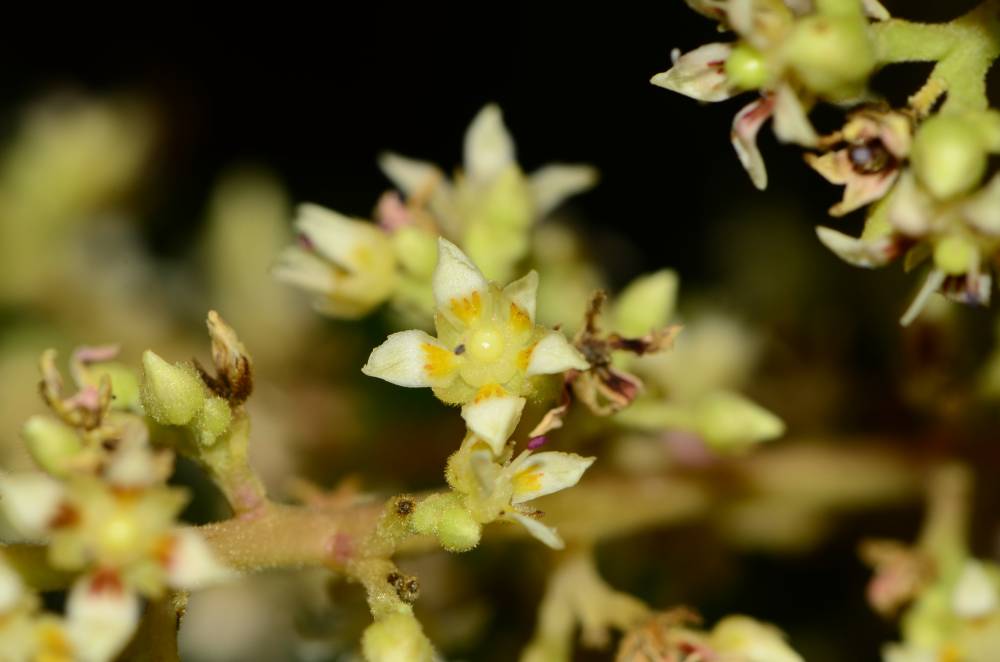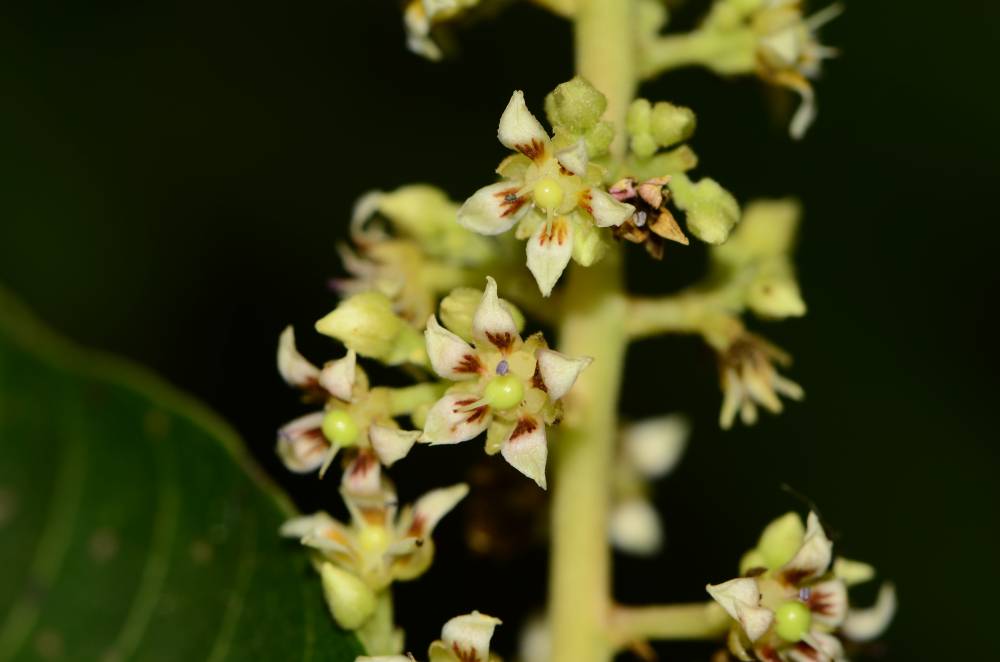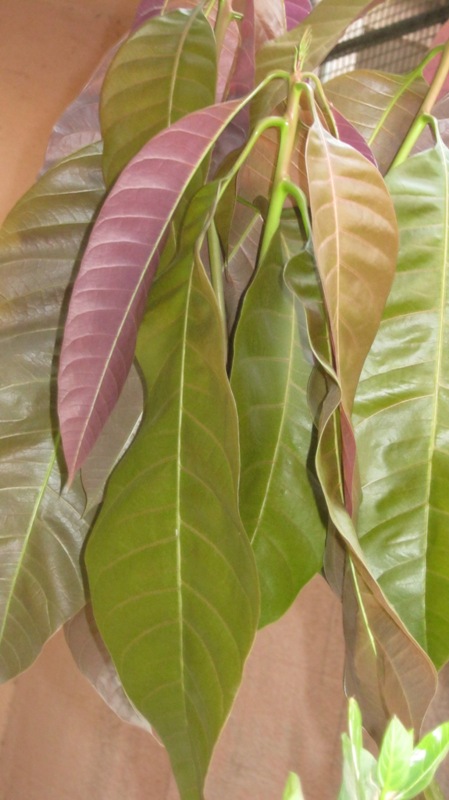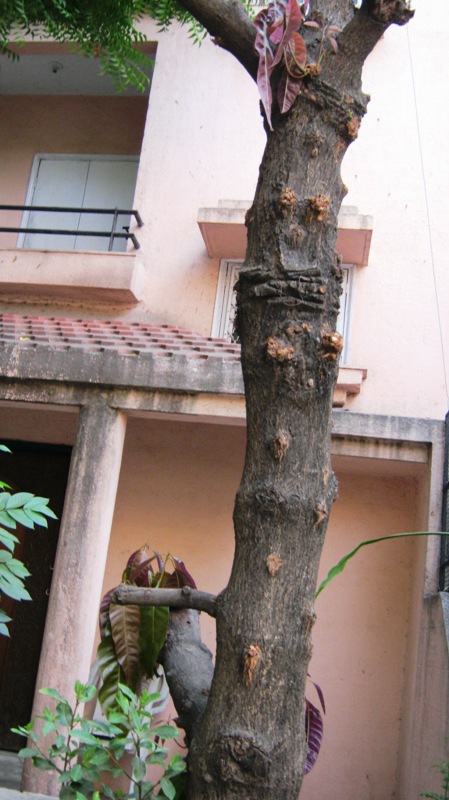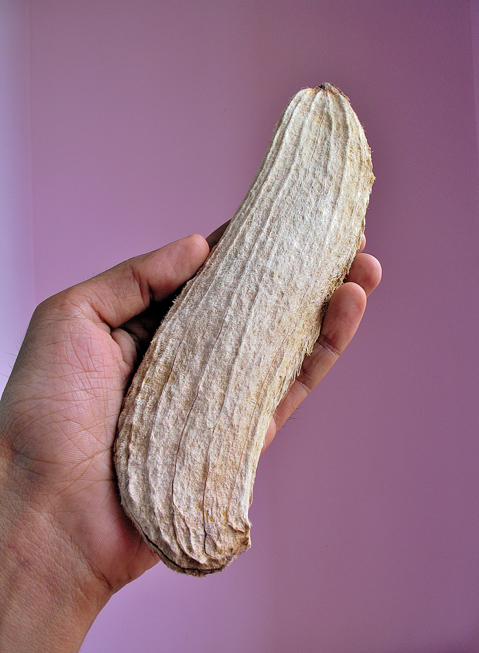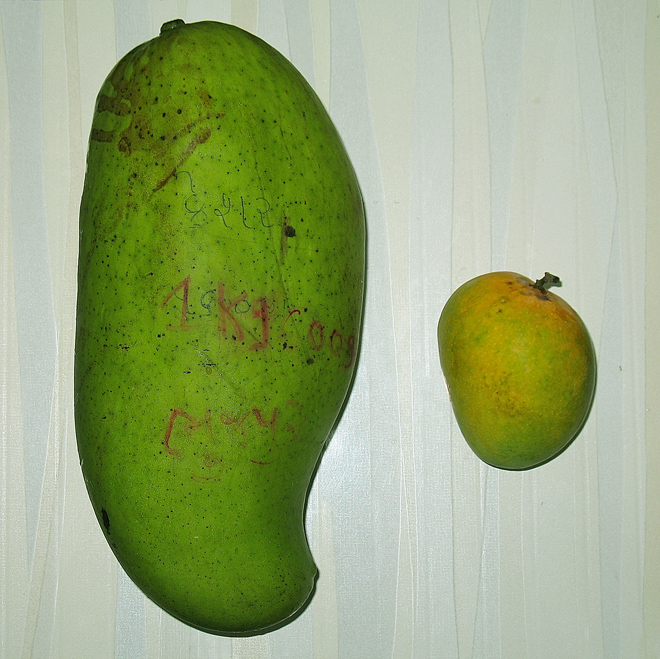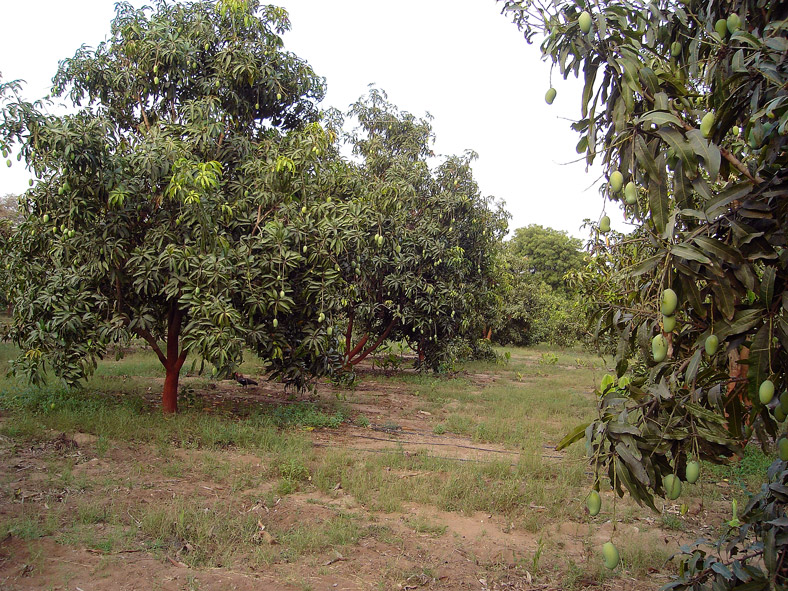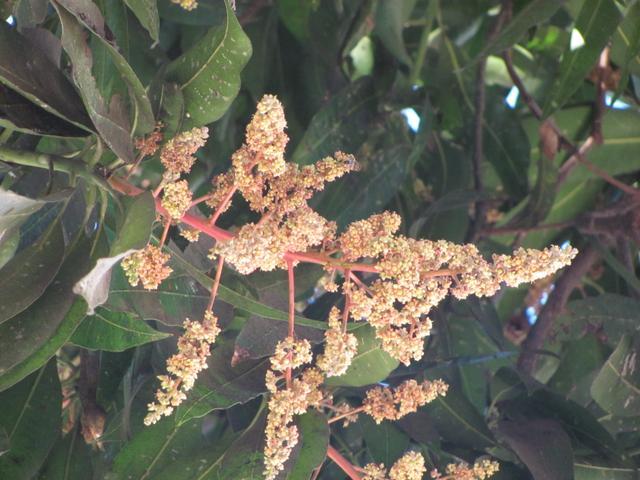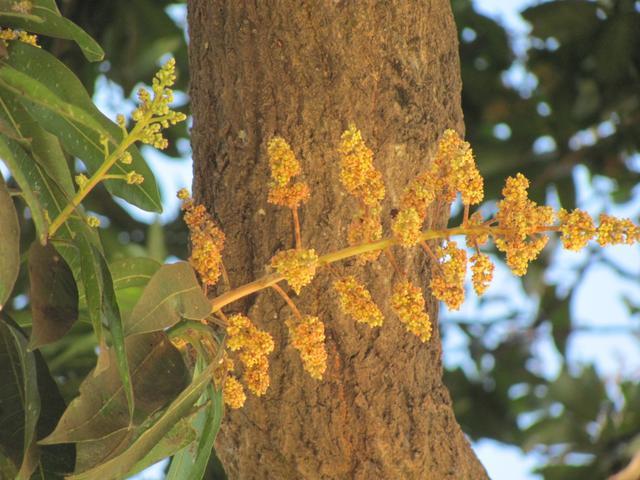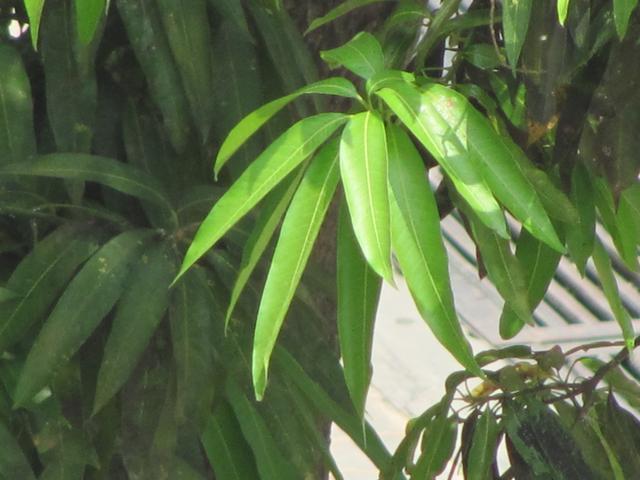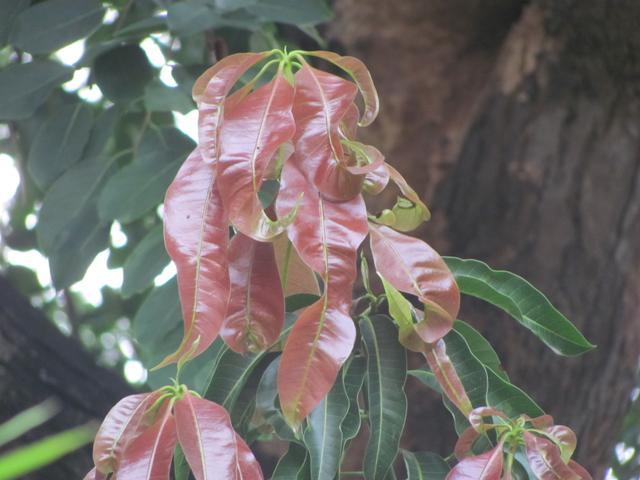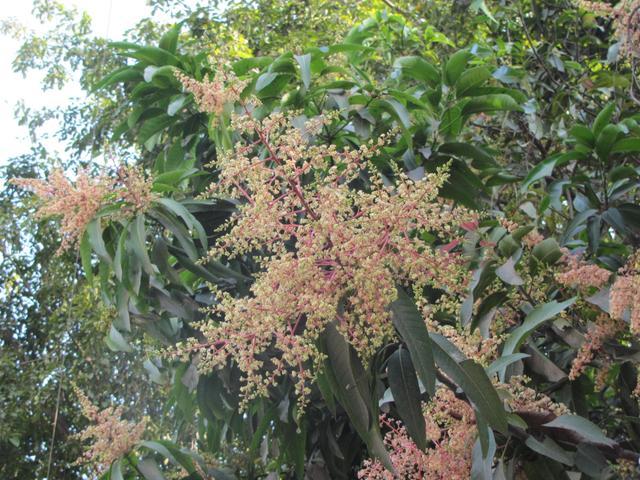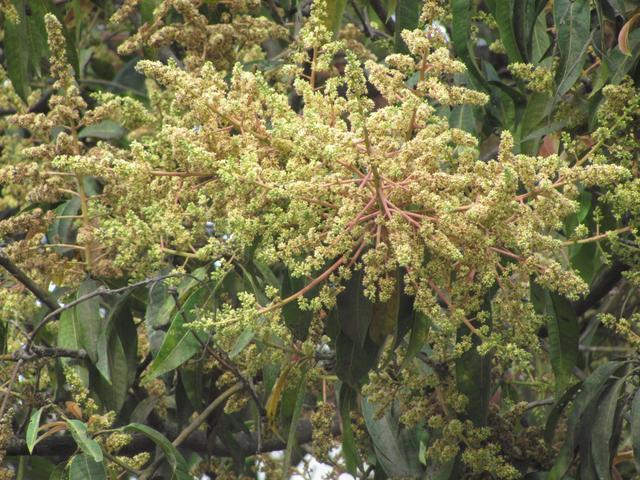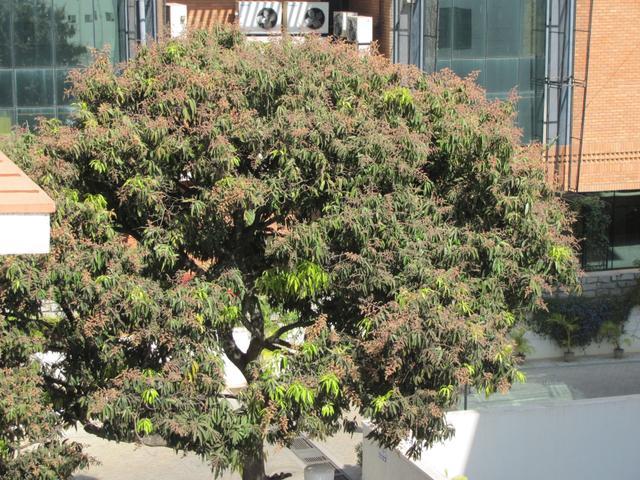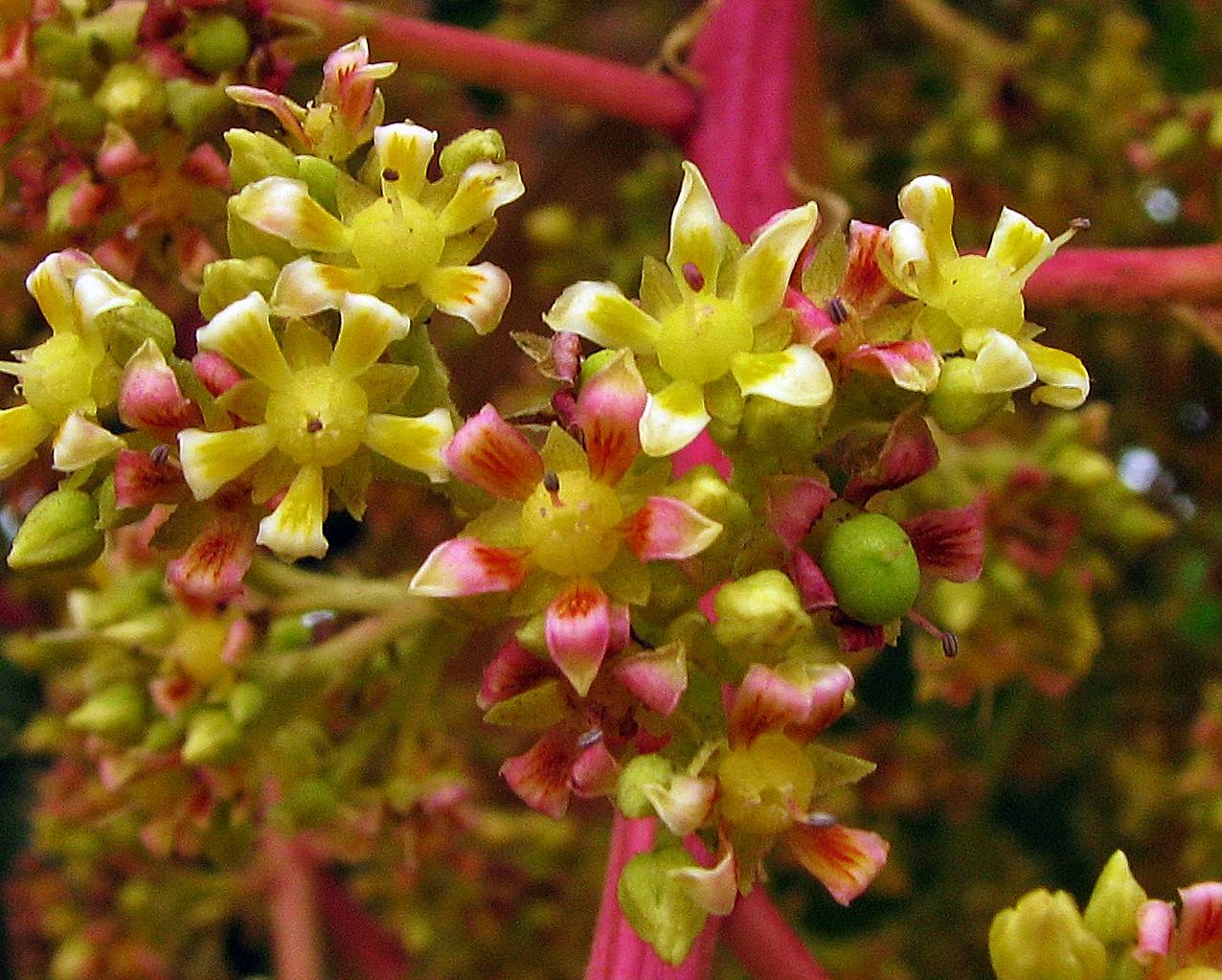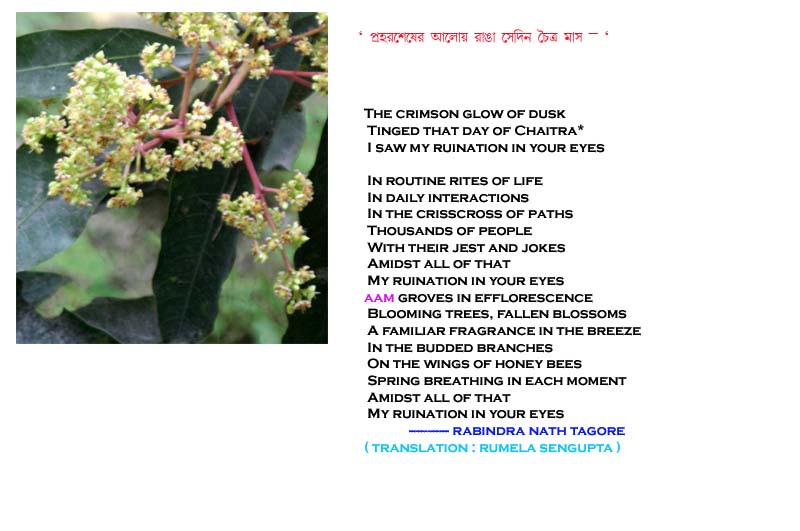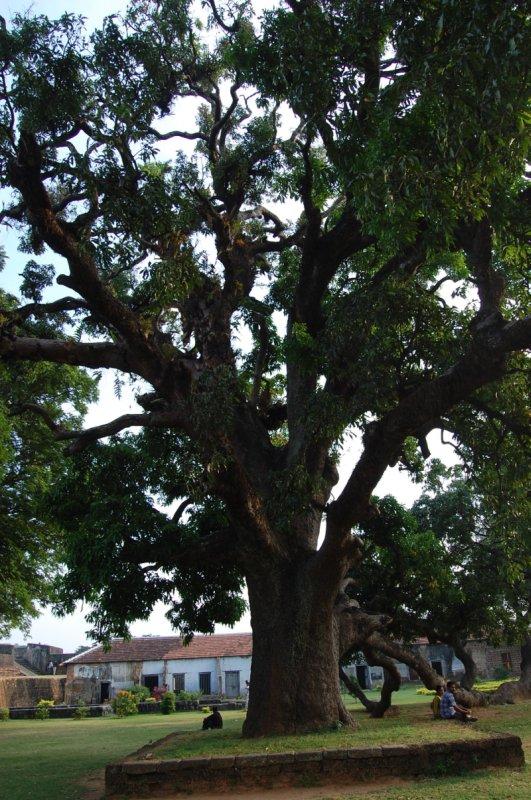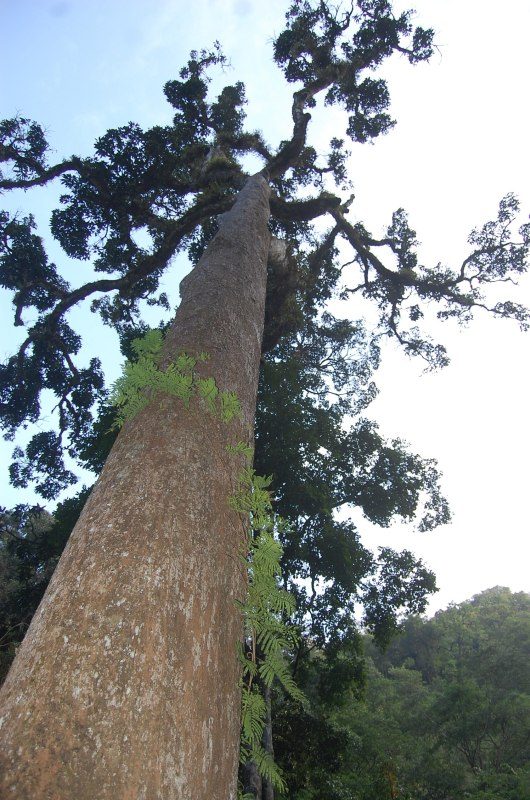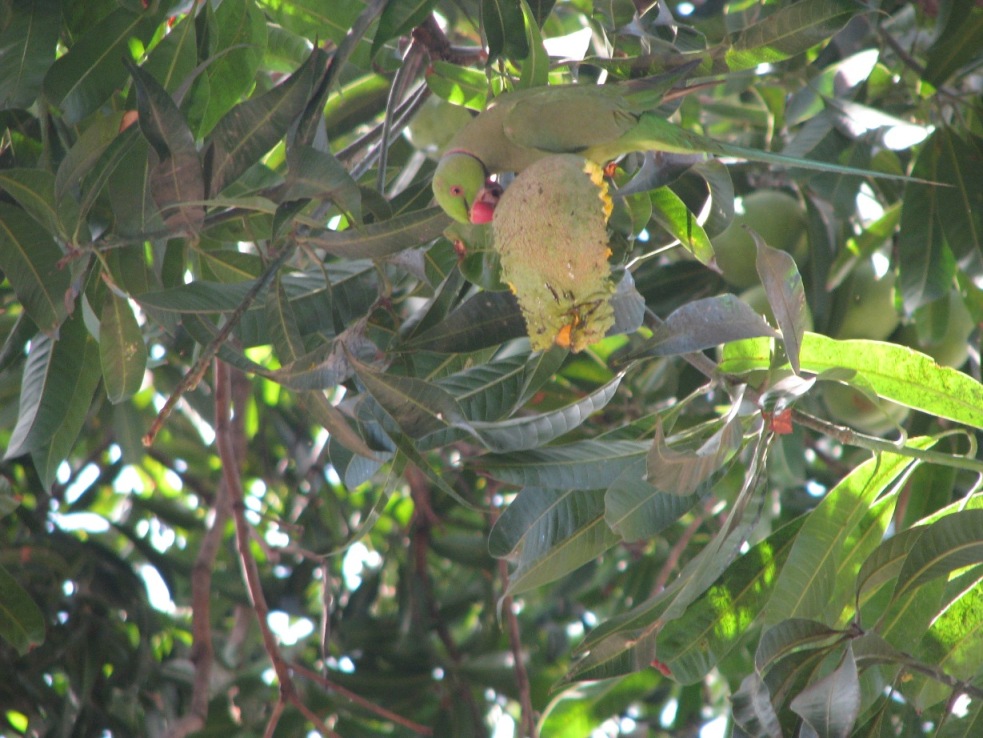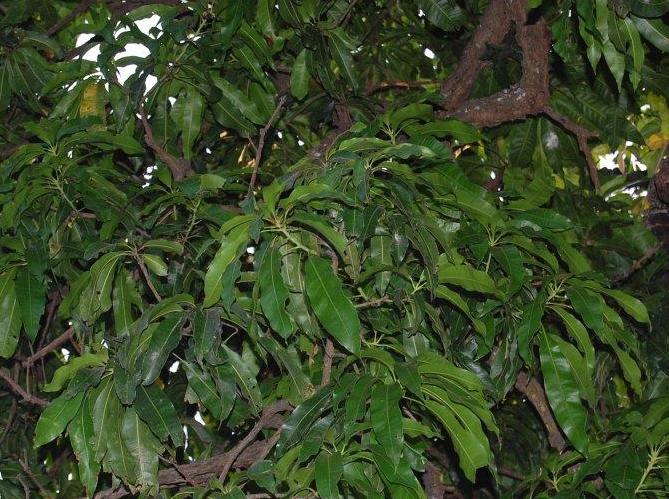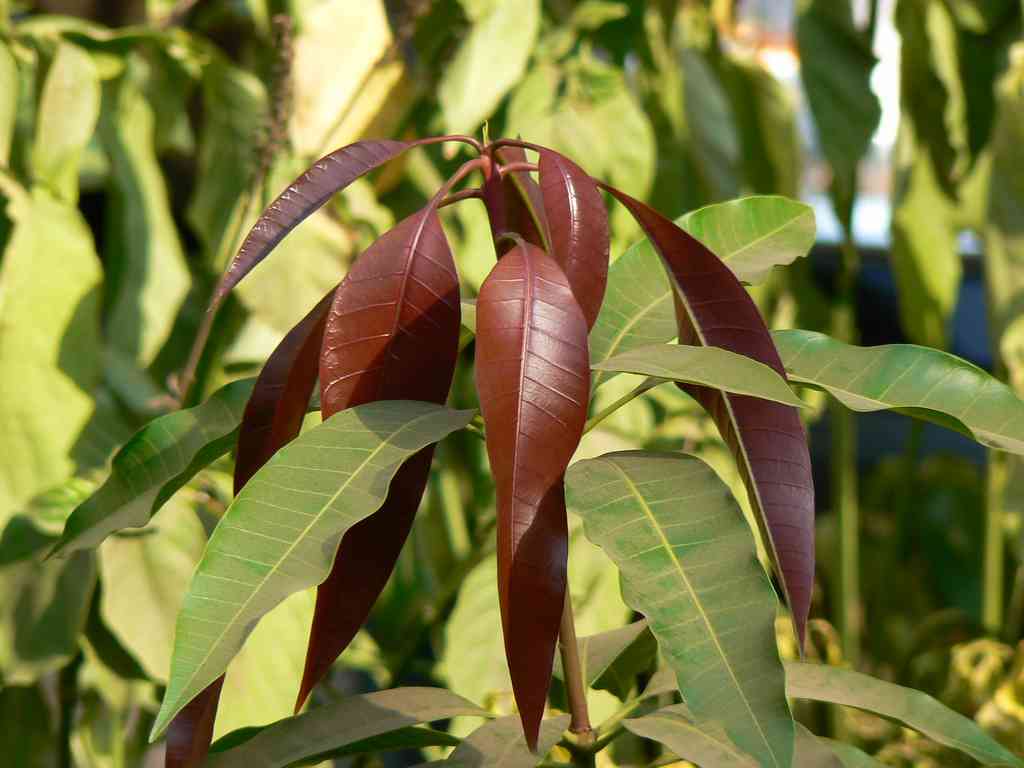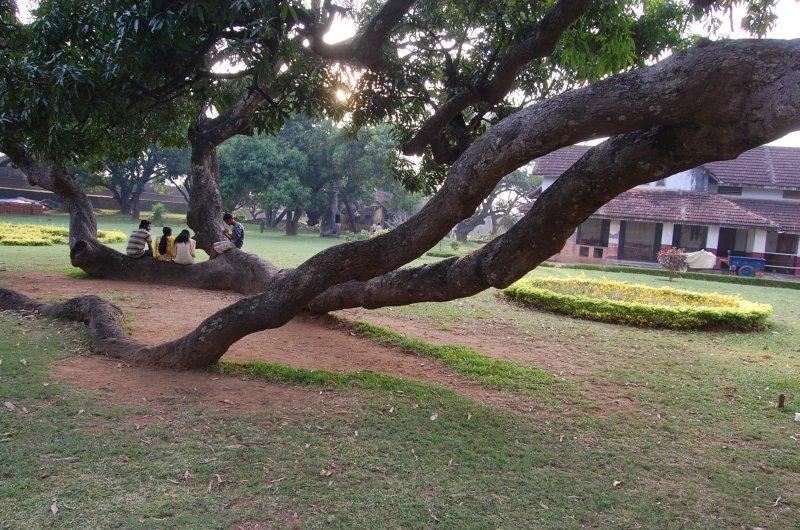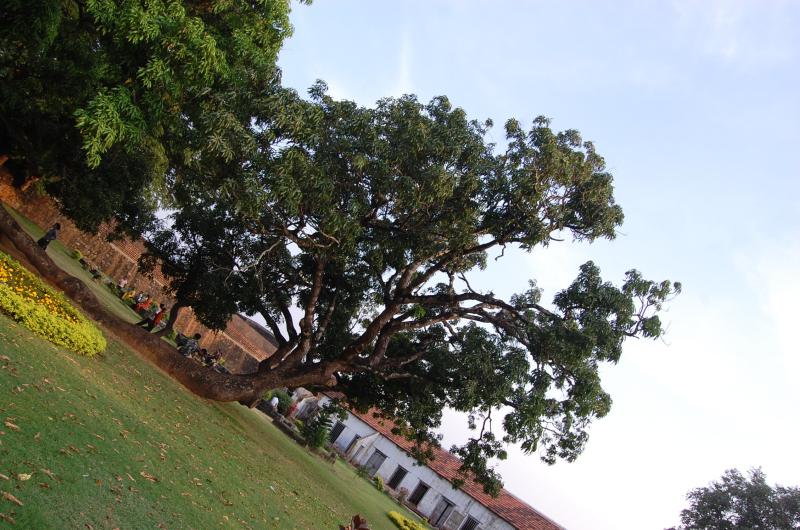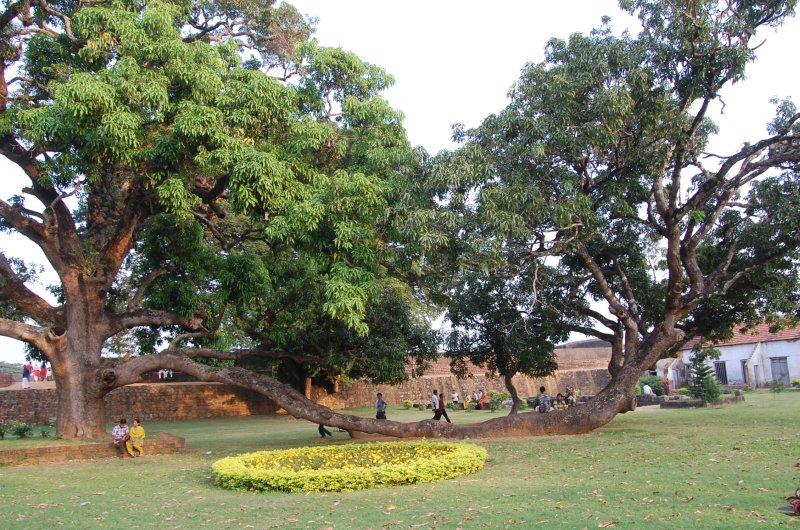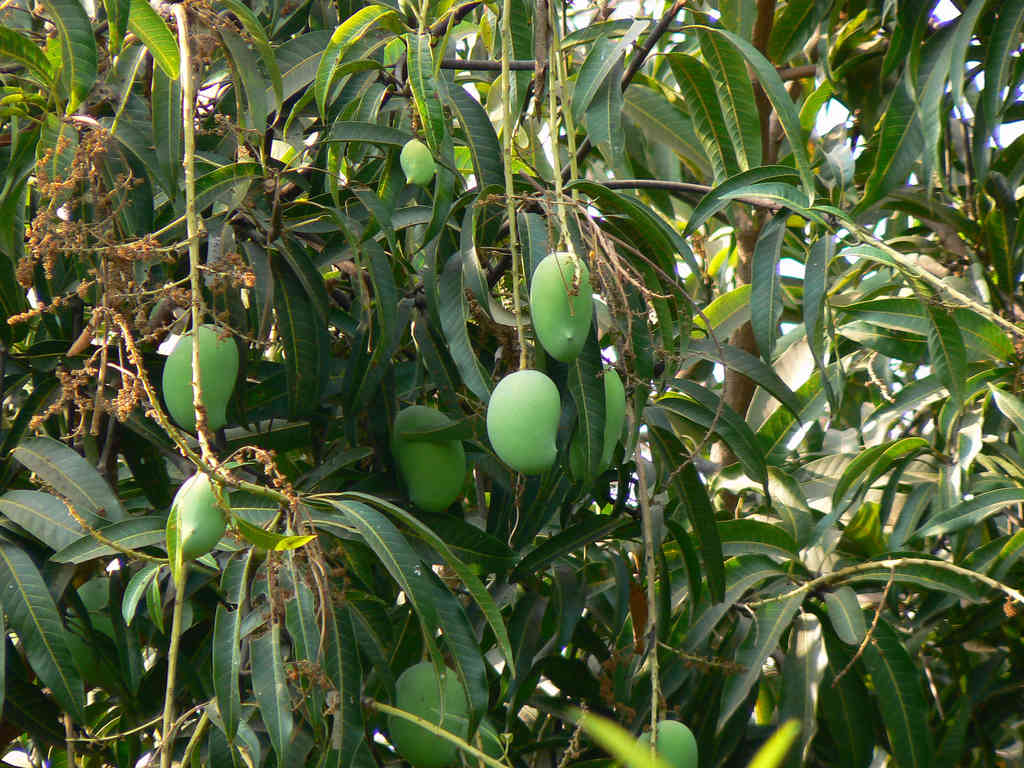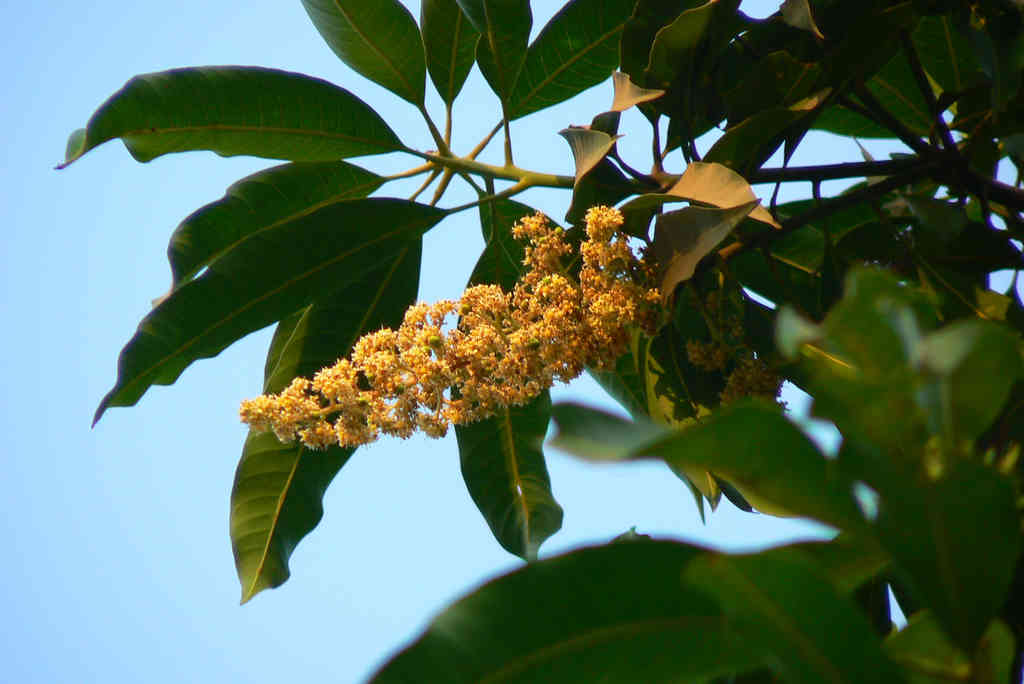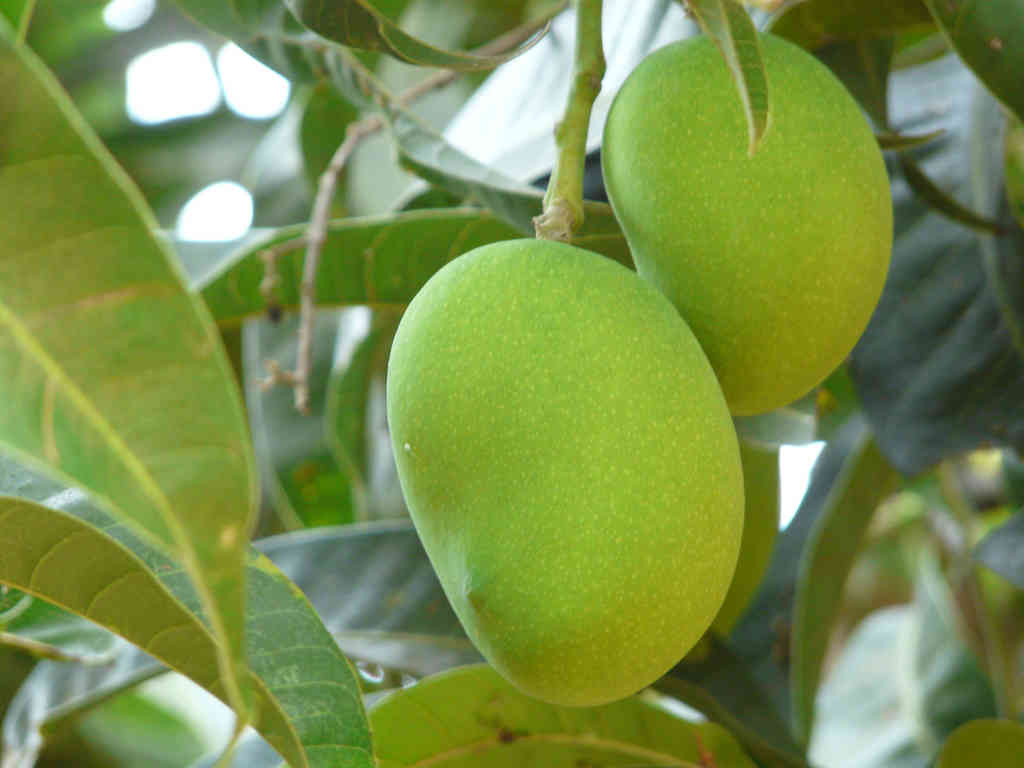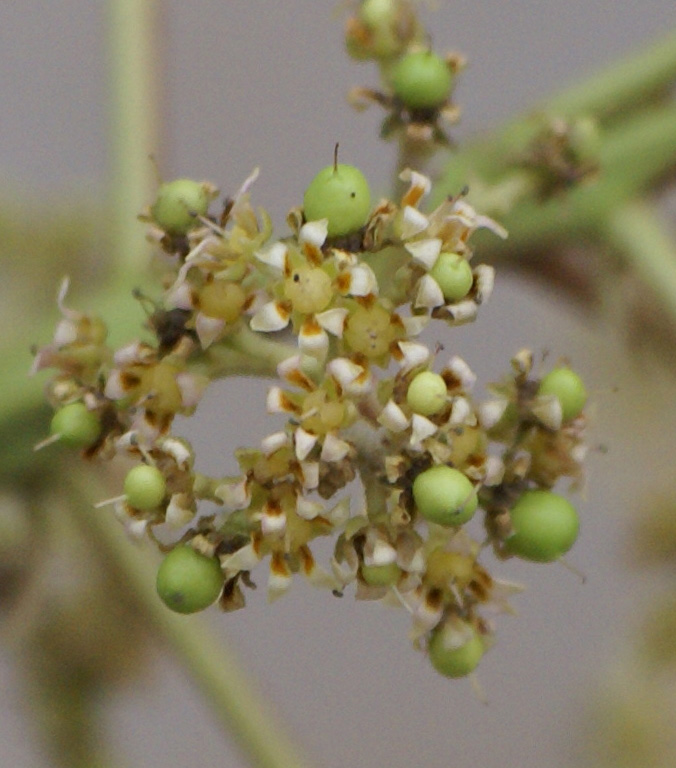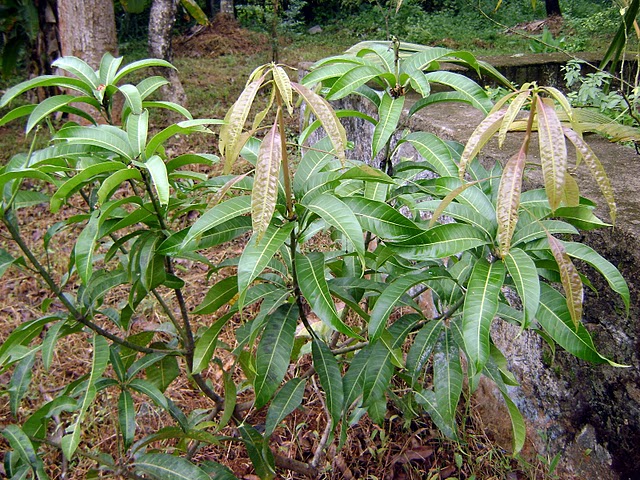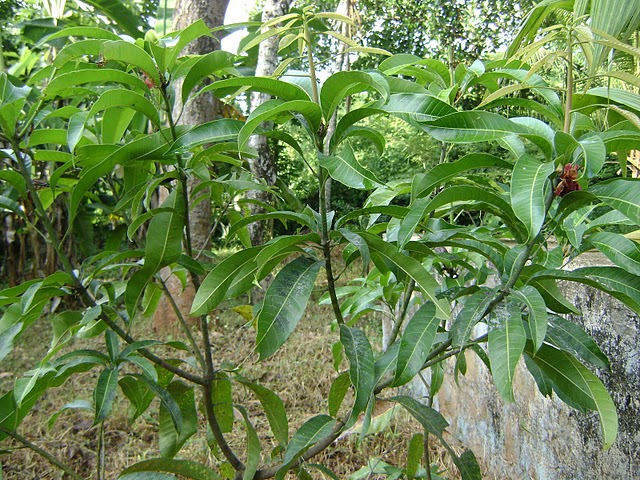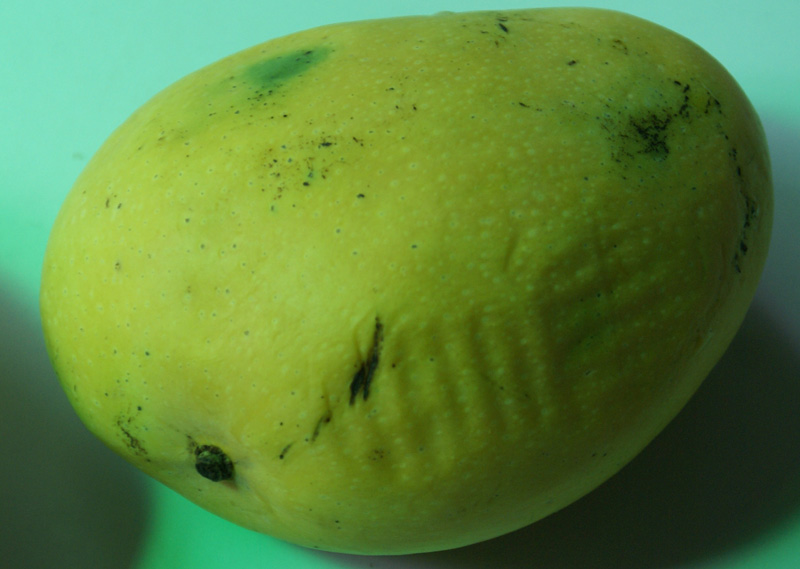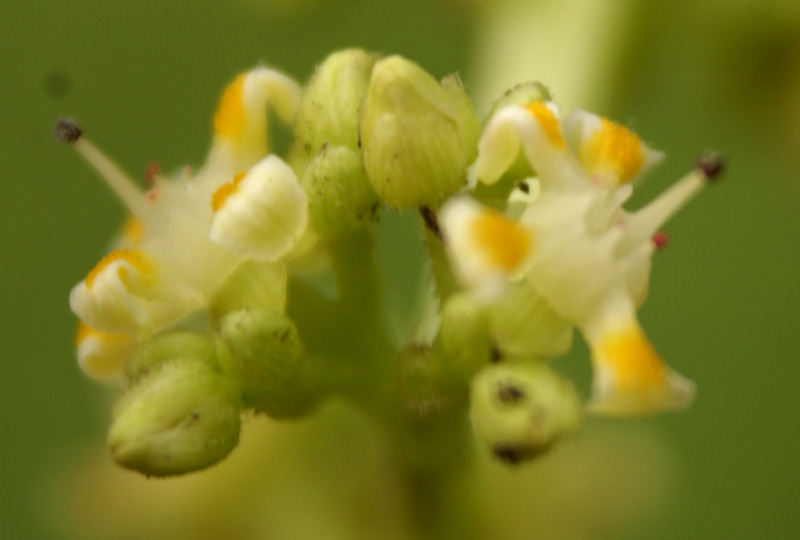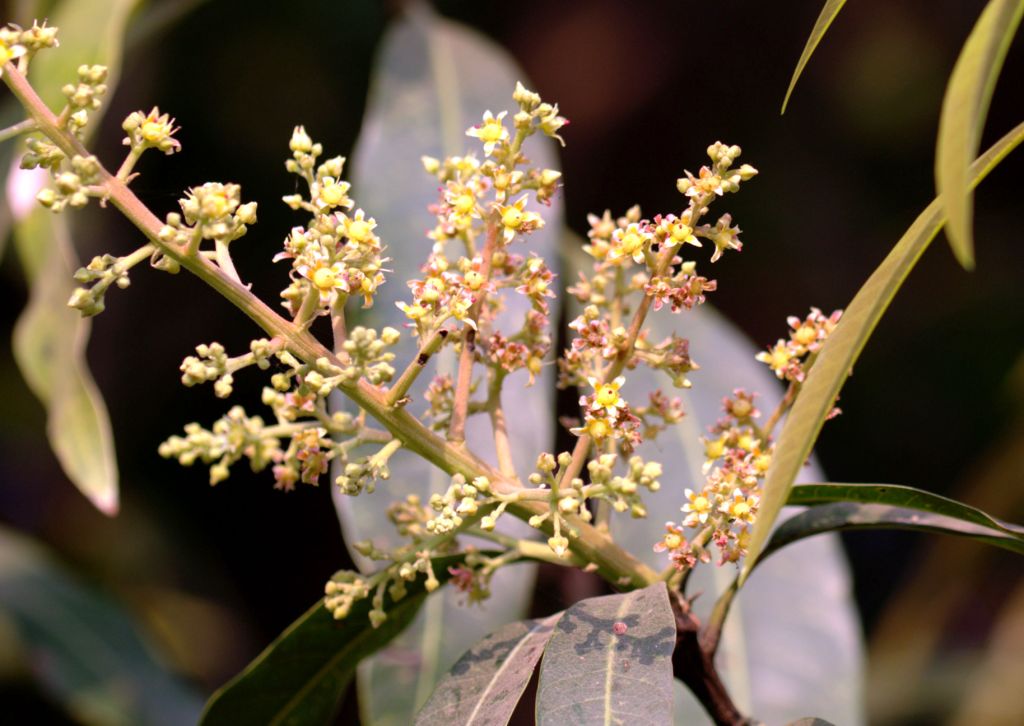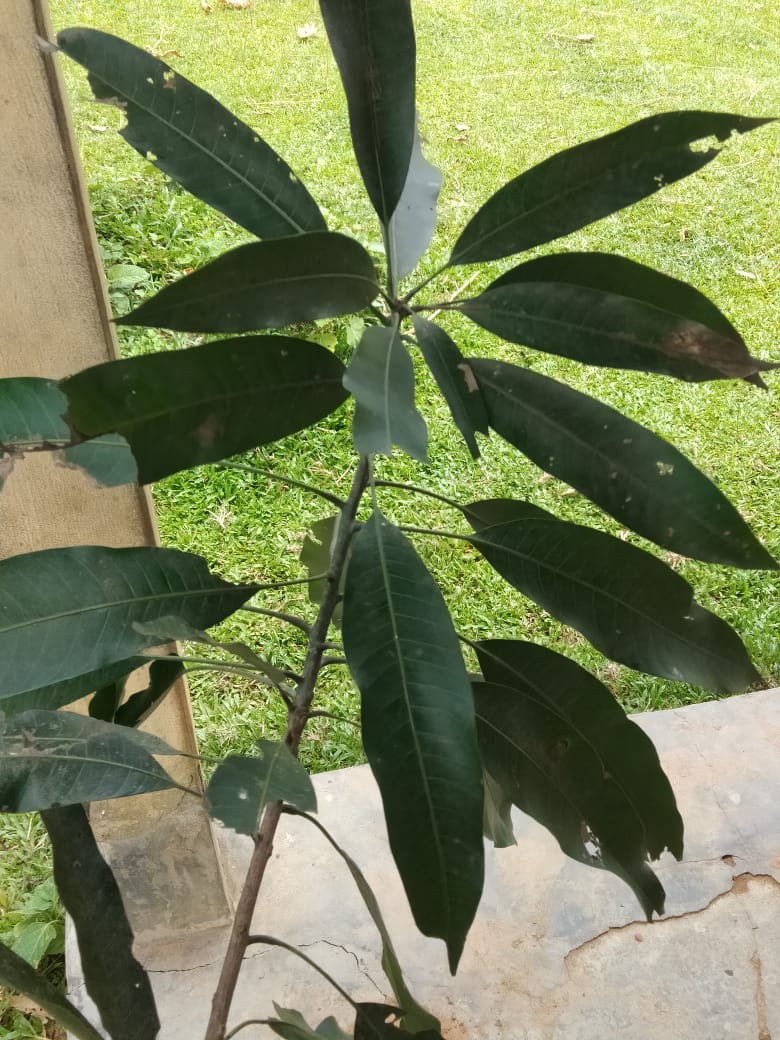.
man-GEF-er-uh — bearing mangos
IN-dih-kuh or in-DEE-kuh — of or from India
.
.
Edible use:
… ripe fruit as FRUIT
.
VALMIKI : OBSERVER OF NATURE: (mixed thread): 1 correct image as above.
Valmiki used CHUTA/AMRA for the same tree, in his Ramayan. The common name for this tree is Mango. Scientifically it is known as Mangifera indica. This is what Chakravarti S Venkatesh says in his ” Our Tree Neighbours “, about the etymology of the scientific name.
“Incidentally it will be of interest to know that the Latin name Mangifera is originally derived from the Tamil word Manga for unripe fruit of this tree.”
Mangifera indica – Dandeli WLS:
Came across this tall fruiting mango tree in Dandeli. The fruits were very sweet!
051011GK Mangifera indica flower close ups: (4 images with 3 close-ups of flowers)
Beautiful flowers of *Mangifera indica *of Anacardiaceae family.
Taken at Kalpetta Waynad, Kerala on 04-10-11.
Beautiful photographs …,
here are mine…. (7 images)
Date/Time-Location- 11.10.2011, NBNP Garden
Place, Altitude, GPS- Anaikatti, Coimbatore Dist 640 MSL
Habitat- Garden
Type-Plant Habit- Tree
Planted during 1996. First flowering was notice this year.
Seems funny, but I thought I got confused. Doesnt leaf look different?
I am going through bad days it seems. I have confusion on Mango tree also :(….
.
Please tell is it some kind of disease or something else? Is there any remedy to it ?
I have the same problem in my trees. One of the local horticulturalist advised me to cu those branches and burn them. He said that it’s a disease.
It’s an ongoing process of every year.
My problem is those small flies that comes on Mango trees at this time of year. We dont want to use pesticide so any other remedy will be useful if someone can suggest.
Here are two contenders that may be responsible for the symptoms you describe:
1) Anthracnose (Colletotrichumstate of Glomerella cingulata Ston, Spaull and Schrenk) : Severe infection destroys the entire inflorescence resulting in no setting of fruits.Tender shoots and foliage are easily affected which ultimately cause ‘die back’ of young branches. Older twigs may also be infected through wounds which in severe cases may be fatal. Depending on the prevailing weather conditions blossom blight may vary in severity from slight to a heavy infection of the panicles.
2) a) Powdery mildew (Oidium mangiferae Berthet) : The affected flowers and fruits drop pre-maturely reducing the crop load considerably or might even prevent the fruit set. The characteristic symptom of the disease is the white superficial powdery fungal growth on leaves, stalks of panicles, flowers and young fruits. Horticulture world
efloraofindia:” Id 29052012MR1’’ Mango tree with big young leaves at Pune:
28th May 2012 Pune.
Found this Mango tree at a private society at Pune. The branches were cut. It had big sized young leaves almost 11 inches in length. Is it normal for a mango tree to have such big young leaves?. There were other mango trees in the vicinity none were trimmed but none had such big leaves.
One of my highlights of this year’s mango season is a giant Kesar mango. Of all the fruits on the tree, it was the only one that beat the yardstick to reach a size of 11 inches x 5 inches, and weighed an impressive 1.6 kgs! The stone is 9 inches long and 2.2 inches wide at the centre but slender nevertheless!
This mango alone produced around three litres of the most deliciously refreshing Mango Panna concentrate! Hope you enjoy seeing these pictures as much as we relished this luscious drink 😉
.
For completeness sake let me add these trees also.
There is great variation in the form, size, color and quality of the fruits. They may be nearly round, oval, ovoid-oblong, or somewhat kidney-shaped, often with a break at the apex, and are usually more or less lop-sided.
Ref. Peurdue
Mango-Macro:
Sharing a Macro image of Mango flower. I hope U will like this..
(Bot. name: Mangifera indica
Family: Anacardiaceae).
Another best ever possible close up of the flower of a very common plant which made it very special … Awesome shot.
Mangifera indica from Panipat- 2011:
This “Aam” tree was shot in March 2011 from Panipat, Mangifera indica Linn., Sp. Pl. 200
A large, evergreen tree with dense, spreading foliage. Leaves 15-30 x 3-10 cm long, oblong-lanceolate, alternate, simple, entire, spathulate, dark green, with somewhat wavy lamina. Flowers in terminal panicles or fascicles, greenish-yellow, polygamous, small. Sepals 4-5-partite. Petals 4-5, imbricate, very small. Stamens 4-5, with long filaments. Fruit a fleshy drupe, kidney-shaped, greenish, dark yellow or light red on ripening. Seeds albuminous, one per fruit.
probably this is the second post of close up shot for mango flower in the group. Great going. Superb shot
FLOWERS/PLANTS MENTIONED BY TAGORE IN HIS SONGS : ( AAM -1 ) : 1 post by 1 author. Attachments (1)
Attaching translated version of a song by Tagore, in which AAM has been mentioned.
Attaching translated version of a song by Tagore, in which AAM (Mangifera indica) is mentioned.
It is my pleasure to share few images of Mangifera indica (Anacardiaceae)
Habit: Evergreen tree.
Habitat: Wild, Dry deciduous forest
Sighting: Chikmagalur and Tumkur, Karnataka, about 1000 and 800 msl respectively
Date:11-05-2014 and 03-03-2015
Nice display …
Green Mangoes seen on the tree last week.
Isn’t it Mangifera indica…!!
Yes it is.
| in Goa– 30/1/08; in Mumbai and much of Maharashtra– (29/2/08); in Jan. end & Feb. in Kolkata; in March’ 08 –Mumbai; Thane in Maharashtra – 14/3/08; at Aarey road, Mumbai, on 22 Nov. ’09; | Trees of Delhi- Flowers (‘Baur’) first seen in mid Feb., reaching a peak in March. |
Mango trees in bloom in Bangalore – efloraofindia | Google Groups
efloraofindia | Google Groups
Parakeet on my Mango – efloraofindia | Google Groups
Mangifera indica L. – flowering, fruiting. – indiantreepix | Google Groups
Mango tree branches -embedded into the ground / Tipu sultan’s green reforms – efloraofindia | Google Groups
… new leaves of mango – efloraofindia | Google Groups
bugs on mango tree – efloraofindia | Google Groups
Height of Mangifera indica, Mango – efloraofindia | Google Groups
Synonym: Mangifera domestica
IN-dih-kuh or in-DEE-kuh — of or from India
Native to: s Asia and India
… ripe fruit as FRUIT
The tree is long-lived with some specimens known to be over 300 years old and still fruiting
Quoted from California Rare Fruit Growers, Inc<http://www.crfg.org/pubs/ff/mango.html>
Symbolic status:
Fruits & Vegetables Week: Mangifera indica, the mango:
Mangifera indica, the mango, a large number of varieties are grown in India and elsewhere in tropical climate.
– I am sending photos of the Alphonso Mango tree planted by me at Pattambi, Kerala. It is a grafted one and the very first year it started flowering, but the flower did not become fruits as I think the tree is very small. Hope it will fruit this year.
Big mango tree in Yelagiri
Mangifera indica—for sharing : 2 posts by 2 authors. Attachments (3)
Mangifera linearifolia (Mukh.) Kosterm. ???
2 attachments
1 image.
So it is most likely to be M. khasiana.
Only Mangifera indica and M.sylvatica are recorded in my State- from … as per reply in another thread.
Here the beak of the fruit looks different.
If this is true, it may be M.indica only.
Going by the Mangifera keys, it may be Mangifera indica only.
I guess it is correct ID !
Thanks for the mail. Indeed I’ve seen the Mangifera sylvatica in Andaman, when I was serving in Port Blair. It is of somewhat sour taste.
The fruits of the M sylvatica as per Flora of India, 4.5-6 cm long and 2.5-3 cm wide. The fruits are acuminate with protruded tip in M. khasiana and M. sylvatica. From the photos given, I think it is of M. indica only!
I think this may also turn out to be Mangifera khasiana as per discussions at MS Nov., 2020/02 Mangifera sp. (khasiana ?) for Id.
Only Mangifera indica and M.sylvatica are recorded in my State
Mangifera linearifolia (Mukh.) Kosterm. ??
For your suggested id, pl. see my comments at MS Nov., 2020/02 Mangifera sp. (khasiana ?) for Id.
Could you pl. help us with the description?
Thanks, … Based on the keys at Mangifera khasiana description, we should take it M.indica only
.
i want to share native name of Mango plant in Santali with script and its transliteration as:
…, many thanks to you for continuously providing the Nepali names of plants, and for providing them in Devanagari script.
.
Mahua and Mango in marriage ritual.
(-Mahasveta devi (Etoa Munda won the battle))
Very nice, … This shows close association of human beings with the trees and plants.
.
Location: Kathmandu, Central Nepal Altitude: 1400 m.
Date : 30 May 2021
Habitat : Cultivated
.
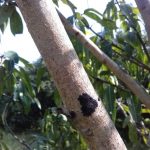
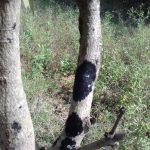

Swamy/New series/ID/50 – Infection on mango tree bark.:
I have received the photographs of a mango tree with some infection/ black formation on the tree. Can any body identify what it is and suggest remedy to over come the problem (infection?).
You can apply a fungicide such as blue copper solution with a paint brush. It might require several applications.
.
Mangifera indica in flower from Jammu-GS01052022-2: 5 very high res. images.
Mangifera indica in flower, clicked from Jammu, J & K, 11-4-2015
.
Mangifera indica L.: 1 high res. image.
Nepali Name : आँप Aap
.
Mangifera sylvatica Roxb. ex Wall.: 7 high res. images.
Habit : Wild
Nepali Names : वन आँप Van Aap / जङ्गली आँप Jangalee Aap
Is this junglee mango edible ?
Yes.
I am not very familiar with this particular species. From what I gather, one of the key features of Mangifera sylvatica is the long-beaked, acuminate fruit. Could you please elaborate on any other distinguishing aspects because such a fruit does not seem to be present in your images?
Yes, I also think it is
https://efloraofindia.com/2021/06/05/mangifera-indica/ only.
.
We are conducting a project pertinent to botanical history of Panama. The great American plant explorer David Fairchild traveled to India in 1899. As a result of this trip he sent part of the collected material to the Summit Garden in Panama. One of the documents that we are studying refers to what we believe are three mango cultivars that were part of this shipment. We think Alphonso/e is one of them, but we cannot guess the other two (they start with “A” and “P”). Any suggestions? Your help and time with this query is highly appreciated.
- Amini
- Pakria
I am assuming these are the correct spellings.
I think the first one is ‘Amiri’ (also spelt as Ameeri).
1 attachment

